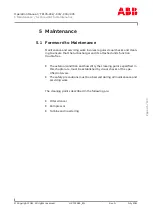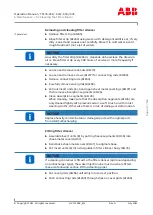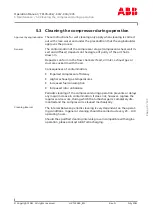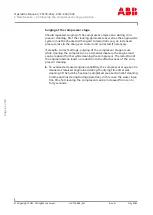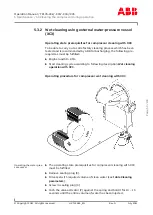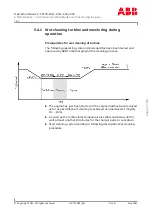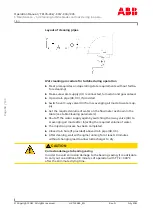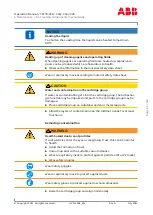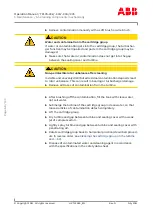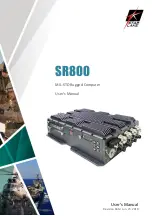
Operation Manual / TPL76-C32/-C33/-C34/-C35
5 Maintenance / 5.4 Cleaning turbine blades and nozzle ring in opera-
tion
© Copyright 2021 . All rights reserved.
HZTL2485_EN
Rev.G
July 2021
¡
Erosion
The dirt is removed by the mechanical action of the impacting water
droplets.
¡
Solubility
Water solubility of the contamination deposits in water.
¡
Thermal shock
Spalling of contamination due to temperature difference.
CAUTION
Corrosion and deposits when cleaning
Damage and impairment of turbocharger parts due to salt water and
cooling water additives
u
Don't use salt water for cleaning, but only clean fresh water.
Components at the turbine end are not cleaned until the engine has been
started or the engine load reduced. The exhaust gas temperature must
not exceed the value specified in the respective cleaning instructions
(see section Prerequisites
TPL-A/-C: Operating state prerequisites for
wet cleaning turbine and nozzle ring
CAUTION
Reduced service life of the components
Failure to comply with the minimum stabilisation time before cleaning,
the prescribed turbine inlet temperatures and the drying time after
cleaning significantly reduces the expected service life of the compon-
ents.
u
Comply with the cleaning parameters given in the tables.
V-engines
In the case of V-engines with several turbochargers on each engine, we
recommend parallel cleaning of both turbochargers. This cleaning pro-
cess is faster and the risk of turbocharger surging is reduced. We recom-
mend finding the most suitable method by performing trials.
Page
56
/
133




